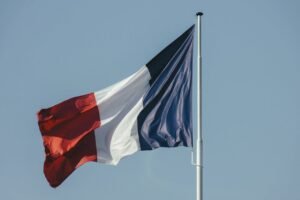

Exploring France: Geography and Landmarks Vocabulary
Learning French vocabulary related to geography and landmarks is essential for anyone planning to travel to France. France is known for its diverse and beautiful landscapes, from the towering mountains of the Alps to the picturesque beaches of the French Riviera. By familiarizing yourself with the vocabulary associated with these geographical features, you can enhance your travel experiences and better appreciate the natural beauty of the country.
Having a basic understanding of French geography vocabulary allows you to navigate and communicate effectively while exploring France. Whether you are asking for directions or reading signs, knowing the names of mountains, rivers, and other landmarks will make your travels much smoother. Additionally, being able to describe and discuss these features in French will enable you to engage in meaningful conversations with locals and gain a deeper understanding of the culture and history of the places you visit.
Table of Contents
ToggleBasic French Vocabulary for Geographical Features
To begin building your French vocabulary for geography and landmarks, it is important to start with the basics. Some essential words to learn include “la montagne” (mountain), “la colline” (hill), “la vallée” (valley), and “la plaine” (plain). These words are commonly used in everyday conversation and will be useful when describing different landscapes in France.
To memorize these vocabulary words, it can be helpful to create flashcards or use mnemonic devices. For example, you could associate “la montagne” with a picture of a mountain and repeat the word aloud while visualizing the image. Another technique is to use the words in context by creating sentences or stories that incorporate them. Practice using these words in conversation or writing exercises to reinforce your understanding and retention.
French Vocabulary for Mountains and Hills
Once you have mastered the basic geographical features, you can move on to more advanced vocabulary related to mountains and hills. Some examples include “le sommet” (summit), “le pic” (peak), and “la crête” (ridge). These words allow you to describe the different parts and characteristics of mountains and hills, adding depth to your descriptions.
France is home to several famous mountains and hills that are worth exploring. The Mont Blanc, located in the French Alps, is the highest mountain in Western Europe and offers breathtaking views. The Pyrenees, a mountain range that forms a natural border between France and Spain, is another popular destination for hikers and nature enthusiasts. The rolling hills of Provence, known for their lavender fields and vineyards, are also a must-visit for those seeking picturesque landscapes.
French Vocabulary for Rivers and Lakes
In addition to mountains and hills, it is important to learn vocabulary related to rivers and lakes. Some key words include “le fleuve” (river), “le lac” (lake), and “la cascade” (waterfall). These words will come in handy when exploring France’s beautiful waterways and natural wonders.
France is blessed with numerous rivers and lakes that offer stunning scenery and recreational opportunities. The Seine River, which flows through Paris, is not only a major transportation route but also a popular spot for river cruises. The Loire River, often referred to as the “Garden of France,” is famous for its picturesque châteaux and vineyards. Lake Annecy, located in the French Alps, is known for its crystal-clear waters and surrounding mountains, making it a popular destination for water sports and outdoor activities.
French Vocabulary for Coasts and Beaches
When visiting France, it is impossible to ignore its beautiful coasts and beaches. Learning vocabulary related to these areas will allow you to fully appreciate the country’s stunning shoreline. Some important words to know include “la plage” (beach), “la côte” (coast), and “la falaise” (cliff).
France is home to some of the most famous beaches in the world, such as the glamorous beaches of the French Riviera. Nice, Cannes, and Saint-Tropez are just a few of the iconic coastal towns that attract visitors from around the globe. The Normandy coast, with its dramatic cliffs and historic D-Day landing sites, is another popular destination. Whether you prefer sunbathing on sandy beaches or exploring rugged coastlines, France offers a wide range of options for beach lovers.
French Vocabulary for Landmarks and Monuments

France is renowned for its rich history and cultural heritage, which is reflected in its numerous landmarks and monuments. Learning vocabulary related to these iconic sites will allow you to fully appreciate their significance and engage in meaningful conversations about them. Some important words to know include “le monument” (monument), “la statue” (statue), and “la tour” (tower).
One of the most famous landmarks in France is the Eiffel Tower, an iconic symbol of Paris and a must-visit for any traveler. The Arc de Triomphe, located at the western end of the Champs-Élysées, is another significant monument that commemorates French military victories. The Palace of Versailles, with its opulent gardens and grand architecture, is a UNESCO World Heritage site that attracts millions of visitors each year.
French Vocabulary for Castles and Palaces
France is known for its fairytale-like castles and palaces, which are scattered throughout the country. Learning vocabulary related to these architectural wonders will allow you to fully appreciate their beauty and historical significance. Some important words to know include “le château” (castle), “le palais” (palace), and “la forteresse” (fortress).
The Château de Chambord, located in the Loire Valley, is one of the most famous castles in France and is known for its distinctive French Renaissance architecture. The Palace of the Popes, located in Avignon, is another significant historical site that served as the residence of the popes during the 14th century. The fortified city of Carcassonne, with its medieval walls and towers, is a UNESCO World Heritage site that offers a glimpse into France’s medieval past.
French Vocabulary for Museums and Galleries
France is home to some of the world’s most renowned museums and galleries, which house priceless works of art and historical artifacts. Learning vocabulary related to these cultural institutions will allow you to fully appreciate the masterpieces on display and engage in meaningful conversations about art and history. Some important words to know include “le musée” (museum), “la galerie” (gallery), and “l’exposition” (exhibition).
The Louvre Museum, located in Paris, is the largest art museum in the world and is home to the iconic Mona Lisa painting. The Musée d’Orsay, also located in Paris, houses an extensive collection of Impressionist and Post-Impressionist masterpieces. The Centre Pompidou, known for its unique architectural design, is a contemporary art museum that showcases works by modern artists.
French Vocabulary for Parks and Gardens
France is known for its beautiful parks and gardens, which offer a peaceful escape from the bustling cities. Learning vocabulary related to these green spaces will allow you to fully appreciate their beauty and engage in meaningful conversations about nature and horticulture. Some important words to know include “le parc” (park), “le jardin” (garden), and “la fontaine” (fountain).
The Jardin du Luxembourg, located in Paris, is one of the most famous parks in France and offers a tranquil retreat with its manicured lawns and picturesque flowerbeds. The Gardens of Versailles, located in the Palace of Versailles, are known for their grandeur and meticulously designed landscapes. The Claude Monet Foundation, located in Giverny, is home to the famous water lily garden that inspired many of Monet’s paintings.
Taking a French Course to Enhance Your Vocabulary for Exploring France
To enhance your vocabulary related to geography and landmarks in France, it is highly recommended to take a French course. A structured language course will provide you with the necessary tools and resources to learn and practice the vocabulary effectively. Look for a course that specifically focuses on this type of vocabulary, as it will ensure that you receive targeted instruction and practice opportunities.
There are many options available for learning French, including online courses, language schools, and private tutors. Consider your learning style and preferences when choosing a course format. Online courses offer flexibility and convenience, allowing you to study at your own pace and from anywhere in the world. Language schools provide a more immersive experience and often offer cultural activities and excursions to enhance your learning.
By improving your French vocabulary related to geography and landmarks, you will be able to communicate effectively while exploring France’s diverse landscapes and iconic sites. This will not only enhance your travel experiences but also allow you to connect with locals on a deeper level and gain a deeper appreciation for the country’s rich culture and history. So start learning today and get ready to embark on an unforgettable journey through France’s geography and landmarks!
If you’re interested in learning more about Norwegian language and culture, you might enjoy reading the article “Norwegian Vocabulary for Health and Fitness: Words for a Healthy Lifestyle.” This article provides essential vocabulary related to health and fitness in Norwegian, helping you to communicate effectively in these areas. Whether you’re discussing exercise routines, healthy eating habits, or general well-being, this article will equip you with the necessary words and phrases. Check it out here.
FAQs
What is the geography of France?
France is located in Western Europe and is the largest country in the European Union. It has a varied landscape, including mountains, plains, and coastal areas. The country is bordered by the Atlantic Ocean to the west, the English Channel to the north, Belgium, Luxembourg, and Germany to the northeast, Switzerland and Italy to the east, and Spain to the south.
What are some famous landmarks in France?
France is home to many famous landmarks, including the Eiffel Tower, the Louvre Museum, Notre-Dame Cathedral, the Palace of Versailles, Mont Saint-Michel, and the Arc de Triomphe. These landmarks attract millions of visitors each year and are an important part of France’s cultural heritage.
What is the significance of the Eiffel Tower?
The Eiffel Tower is one of the most famous landmarks in France and is a symbol of Paris. It was built in 1889 for the World’s Fair and was originally intended to be a temporary structure. However, it quickly became a popular attraction and was eventually made a permanent fixture. Today, the Eiffel Tower is one of the most visited landmarks in the world and is an important part of France’s cultural heritage.
What is the Louvre Museum?
The Louvre Museum is one of the largest and most famous museums in the world. It is located in Paris and is home to over 35,000 works of art, including the Mona Lisa and the Venus de Milo. The museum was originally a royal palace and was converted into a museum in 1793. Today, it is one of the most visited museums in the world and is an important part of France’s cultural heritage.
What is the Palace of Versailles?
The Palace of Versailles is a famous landmark located just outside of Paris. It was originally built as a hunting lodge for King Louis XIII in the 17th century but was later expanded by King Louis XIV into a grand palace. The palace is known for its opulent decorations and gardens and is an important part of France’s cultural heritage. Today, it is a popular tourist attraction and is visited by millions of people each year.
If you want to learn Norwegian, you can register for classes here. We look forward to hearing from you and helping you become fluent in Norwegian.






